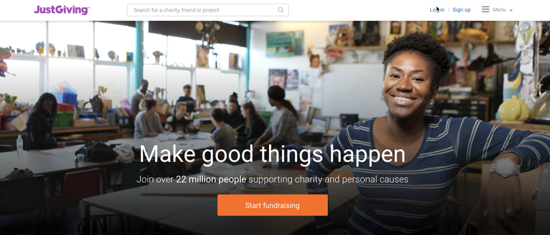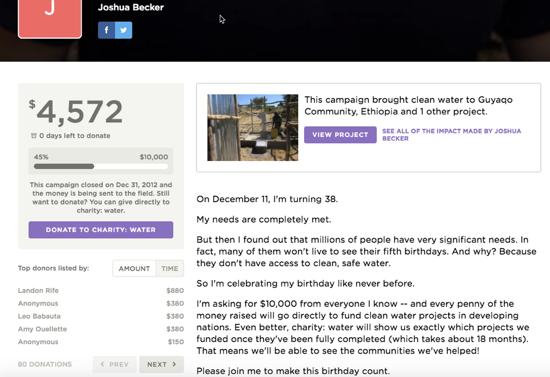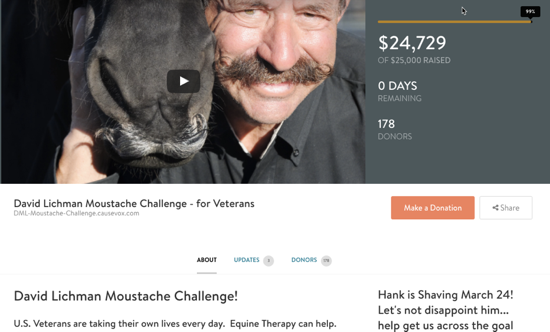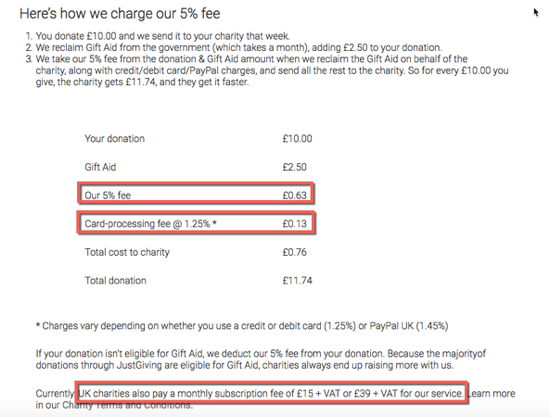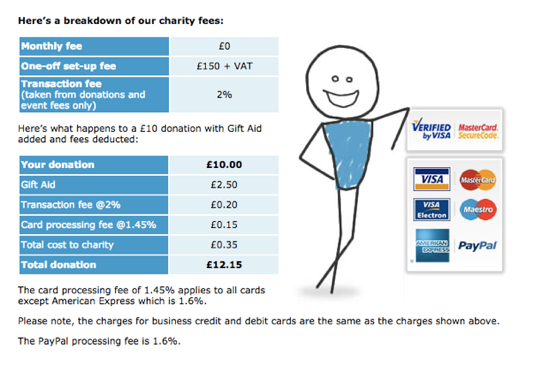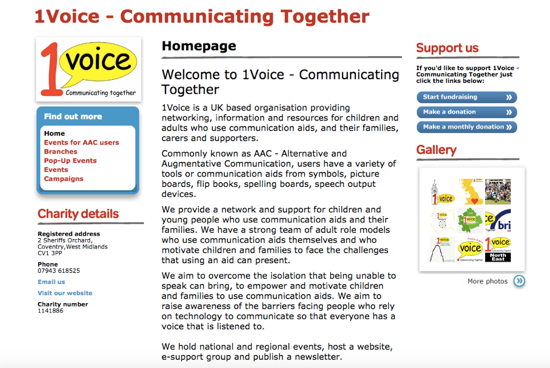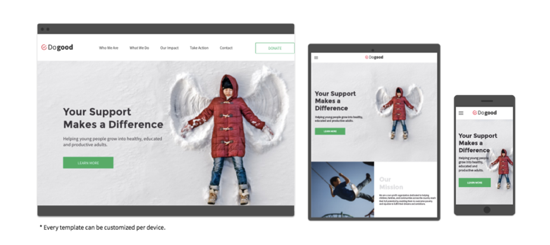Your guide to fundraising online (doing it via your own site vs online platforms)
Online giving has become an important part of donating for supporters. Consider these stats:
- Online giving increased in 2016 by 7.9% year-over-year;
- Donations made via websites, social media and apps account for 26% of donations in the UK;
- Websites, social media and apps account for £2.4 billion in donations in the UK annually.
There is no question that fundraising platforms like JustGiving and Virgin Money Giving have contributed significantly to the donations boost by transforming the way we give to charity.
So if you’re a non-profit, how do you go about maximising online donations? Should you use your own website or should you use giving platforms like JustGiving? Or maybe both?
While there’s no right answer, in this post we’ll look at the pros and cons of fundraising via your own website versus online giving platforms so you can decide the best approach for you and your audience.
Pros and cons of fundraising via online giving platforms
Fundraising via online platforms is becoming an increasingly popular way for non-profits to raise money. It seems easy: you sign up with a popular platform, create a page where you share your cause and list your needs, click a few buttons, and poof! Donations start rolling in.
If only it were that easy.
Let’s talk about the pros and cons of raising money via fundraising platforms so you know what to expect.
Pros
You can reach a bigger audience. For example, JustGiving has 22 million users located in more than 160 countries. Consider the exposure and how you can use this platform to attract and inspire new donors who might not be able to find out you exist or contribute to your cause otherwise.
It’s a valuable form of marketing. JustGiving and Virgin Money Giving are amongst the most popular online giving platforms, and it’s where lots of people go when searching for a cause to support.
By setting up your fundraising campaign on a popular platform, you can help raise your non-profit’s visibility, which can not only result in more people being made aware of what you do and the causes you’re fighting for, but also in increased media attention, which can get even more eyes on you.
It allows donors to get involved and set up their own mini-fundraising campaigns for the causes they want to support.
These can be anything from birthday campaigns:
To athletic events and different challenges, from running marathons to shaving heads or, why not, 25+year old moustaches:
It caters to younger donors who are more likely to donate online using mobile apps and online giving platforms. So if you can come up with a catchy campaign idea that can appeal to this younger demographic, you can increase the chances of getting their support.
It saves you time. Most platforms are easy to use so you should have no trouble setting up your campaign with ease. Plus, you’re likely to find automated functions that’ll save you lots of time, like donor receipts, thank you emails, donor data collection, and more.
Cons
The fees. Fees vary between platforms but what’s important to keep in mind is that no fundraising platform is free. Some charge a one-off set-up fee for monthly maintenance, while others take a percentage of each donation you receive. Then there are also VAT and credit card processing fees.
Make sure you consider all the fees before signing up. But generally speaking, the larger and more popular the platform, the higher the fees.
Following are a few examples so you get an idea of the kind of fees you can expect to pay.
These are the fees for using JustGiving:
And these are the fees for Virgin Money Giving:
Not a good option if you’re looking to bolster your non-profit’s general fund. The type of fundraising campaigns that work best on these platforms are those that focus on a specific idea or cause and run for a set period, for example for a week and up to three months.
Setting a deadline creates a sense of urgency, playing up to the fear of missing out. This encourages more would-be donors to be part of it and donate now.
You still have to do the work of promoting your page and your cause.
Sure, potential donors may be stumbling upon your page and your campaign may get traction – but what if it doesn’t? Don’t expect results just because you’re running your campaign on a popular platform.
You still have to do the work to bring in donors. You still have to promote your campaign on your site, on your blog and on social media sites like Twitter and Facebook. No one else will do that for you.
Pros and cons of fundraising via your own website
There are lots of pros and cons to running your fundraising campaign on your site. Maybe you want more control over the campaign, or maybe you prefer to build a closer relationship with donors so you can entice them to become long-term supporters.
So next let’s look at the pluses and minuses of hosting your fundraising campaign on your own website.
Pros
You own your campaign. In other words, you have complete control over how your campaign looks and feels.
Platforms like JustGiving and Virgin Money Giving use templates for their campaigns. That means all campaigns look more or less the same. So if you want to get a little creative in terms of design or structure, tough luck.
For example, here’s how a charity page looks on Virgin Money Giving:
And this is how a campaign page looks:
But when it’s your website, you make the rules. You can design it as you see fit, and make it your own so it matches your campaign idea and brand.
Worried about your lack of technical skills? No need because the 123 Reg Website Builder is so easy to use that anyone can create and customise a website, even with no coding or design skills.
Plus, you get to use a template that’s specifically designed for charity sites, like this one:
You own the message. Running your campaign on a popular platform also means that there’s a lot of competition for attention.
Not to say that Google’s search results isn’t also a competitive place, but here’s the difference: if you’re able to attract people to your site, it means they’re interested so you have a clean way to communicate with them. You choose how to engage them with your copy, your site’s design, your calls-to-action.
But if they’re on a fundraising platform with thousands of campaigns, they can quickly click off and back from one charity to another, from one campaign to another. The temptation to wander off is much higher.
You own your donors. When someone donates to your cause on JustGiving, that person feels more of an allegiance with that brand, and less with you. But when you run the campaign on your own website, they’ll feel connected to you.
You control how you connect with them, and how you engage with them on your site, via email or social media channels. You have the freedom to interact with your donors anyway and anywhere you like, without any constraints from fundraising platforms.
You keep more money. We’ve talked about the big commissions and fees that fundraising platforms charge for their services. So if you bypass these platforms and decide to run your campaign on your own website, you’ll keep that 3-10% to use for your cause.
You get to build your mailing list. Your email list is your most valuable fundraising asset. It’s your list of prospects, donors, volunteers, and anyone else who has given you their permission to communicate with them via email. You can contact them whenever you want.
So even if first-time visitors may not be ready to donate right away, you can entice them to sign up for your mailing list so you can then build a relationship with them and sell them on your cause.
Cons
Access to a smaller audience. Now, while running a campaign on a platform like JustGiving doesn’t guarantee that you’ll get thousands of donations (or even one), what it does offer is a huge amount of traffic and millions of potential donors. If you’re doing things yourself, you’ll need to work hard to attract even a fraction of the audience.
It’s time-consuming. There’s a reason why so many non-profits use these platforms. The process of fundraising is still complicated, even with all the available tools and technology. You need to consider things like customer support, how you handle donations and more, which can all take up quite a bit of time to manage.
It’s harder to create buzz. Journalists and bloggers are constantly browsing online giving platforms looking for remarkable campaigns that they can write about. Readers love a good story, so a good charity campaign can serve as a popular topic.
Now, if you run a campaign on your website, you’ll have to work much harder to get that PR love and have journalists write about your cause.
Wrapping up
Now that you know the pros and cons of these online fundraising options you can make an informed decision over which one’s best for you based on your cause and campaign idea, your audience, and your goals.
Of course, you can use both. When you diversify your channels and sources of funding, you also increase the chances to raise more money (and awareness) for your cause and non-profit.

